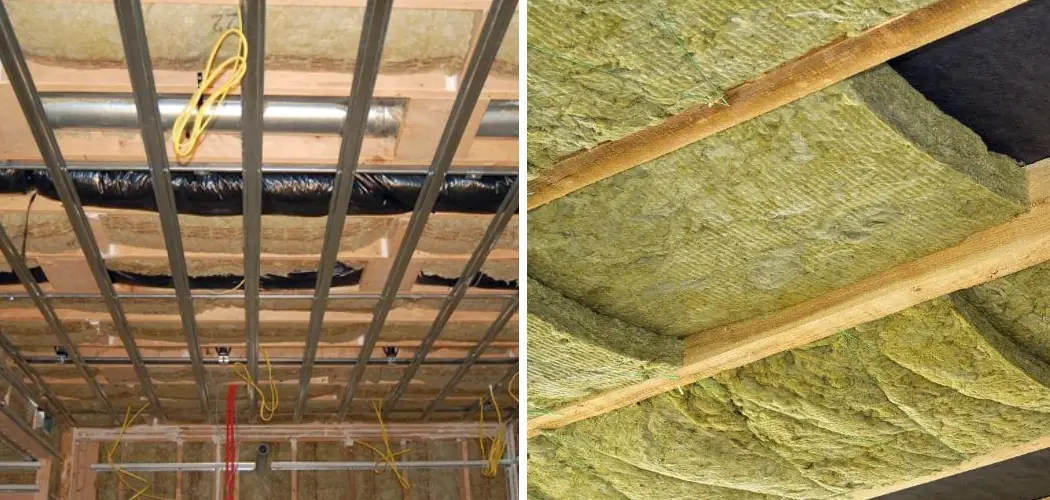If you’re a homeowner with a basement, chances are you’ve heard the sound of footsteps from above or construction sounds from neighboring homes. You must know How to Soundproof Your Basement Ceiling. With every distraction comes unwanted noise, something that can be distracting and even bothersome when trying to focus on the projects below.
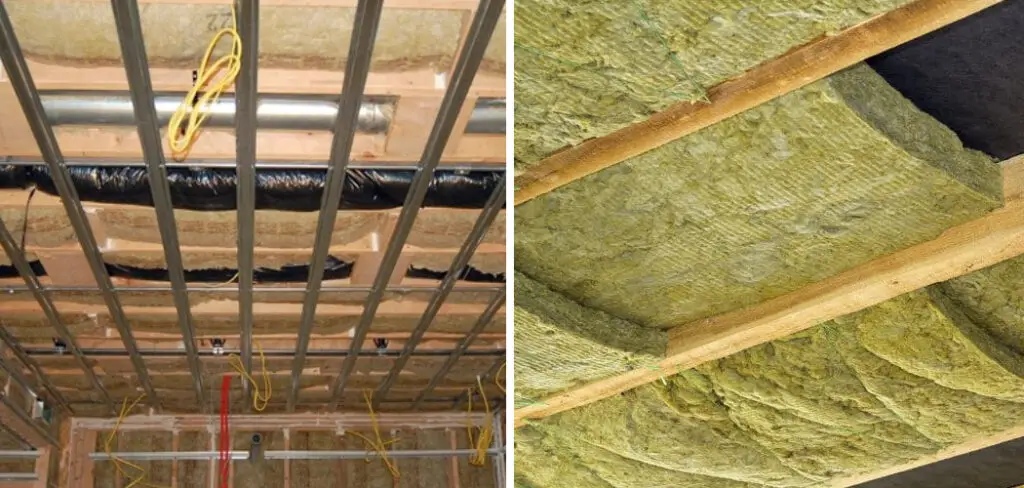
But what if there was an easy way to reduce the echoes coming in from outside sources? Soundproofing your basement ceiling is not as intimidating as it may seem it’s quite simple! In this blog post, we’ll discuss how to easily soundproof your basement ceiling so that you can feel peaceful when doing tasks in one of your home’s most important spaces.
Tools You Will Need
- Acoustic foam panels
- Adhesive strips
- Polyester batting
- Spray adhesive
- Soundproofing sealant
6 Steps Guide on How to Soundproof Your Basement Ceiling
1. Cover Any Exposed Ceiling Fixtures
If you are looking to soundproof your basement ceiling, covering any exposed ceiling fixtures with acoustic foam panels is a great place to start. Not only are the acoustic foam panels aesthetically pleasing and discreet, but they will help to absorb noises from reverberating off the hard surfaces of your ceiling, such as pipes and ducts.
Acoustic foams can absorb certain high-pitched frequencies more than others, so it’s important to research which types of foams would be best suited for reducing noise in your basement. Once installed, you should notice a significant improvement in the sound quality of your basement!
2. Attach Adhesive Strips
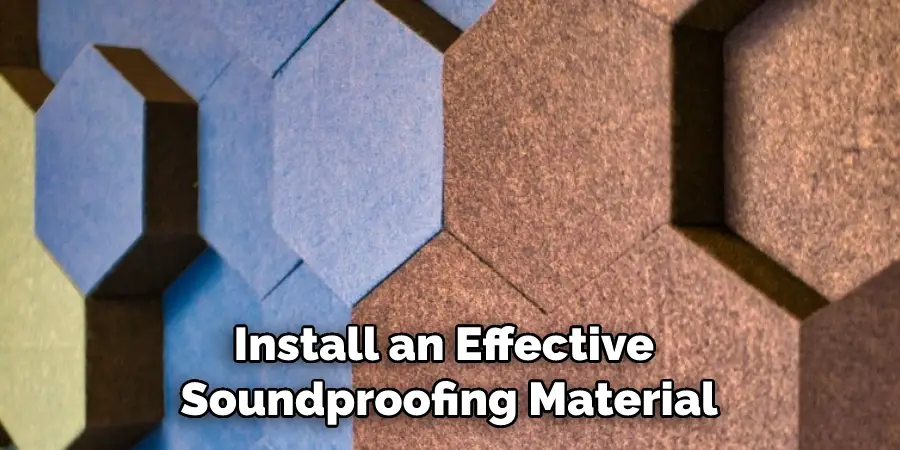
For any basement soundproofing project, it is vital to attach adhesive strips along the edges of your ceiling joists to create a snug fit for the material you choose. This will ensure that no air passes through gaps between the joists and the material chosen. It is also important to secure similar strips around any other structural components in your ceiling, such as metal support plates or beams.
Doing so will help to create a seamless and complete seal that is designed to reduce noise levels and echoing within your basement space. With these small steps taken ahead of time, it will be much easier to install an effective soundproofing material, giving you quick results and improved acoustics.
3. Unroll the Polyester Batting
Adding a layer of insulation to your basement ceiling is essential in soundproofing your space. Unrolling the polyester batting first and then securely attaching it with spray adhesive are important steps for creating a successful sound barrier.
Investing in this insulation will pay off in the long run as it will help to reduce noise from outside sources and create a more peaceful environment for you. Doing this extra step will ensure that your space is properly soundproofed so that you can truly enjoy its benefits.
4. Fill in Any Gaps Around Fixtures
If you are trying to soundproof your basement ceiling, you’ll want to make sure that you use soundproofing sealant. This powerful material helps block out noise, ensuring that your space remains peaceful and quiet. To get the best results, use the sealant to fill in any small gaps or spaces around fixtures as well as at the edges of acoustic panels.
Additionally, the sealant is easily applicable and doesn’t require a lot of steps before it’s ready for usage. Don’t forget this easy step when you’re taking steps to soundproof your basement ceiling!
5. Hang Additional Acoustic Foam Panels
Soundproofing a basement does not have to be an expensive process, particularly if you add acoustic foam panels to the interior walls. These panels provide complete sound absorption, meaning that any of those troublesome echoes will be drastically reduced when placed along the walls of your basement.
Not only that, but once in place these acoustic foam panels absorb noise coming from both sides, creating an environment of peace and comfort for those who wish to work in their basement. With their amazing abilities and difficulty-free installation, acoustic foam panels are the ideal addition to improve soundproofing capabilities in any basement.
6. Install a Drop Ceiling in the Basement
Installing a drop ceiling in your basement can be an effective way to soundproof and improve the appearance of the room. This method utilizes a suspended grid where tiles attach to it, and it gives a traditional look reminiscent of many offices and other indoor professional spaces. Not only that, but they provide excellent acoustic insulation and can even help with thermal insulation when the right materials are used.
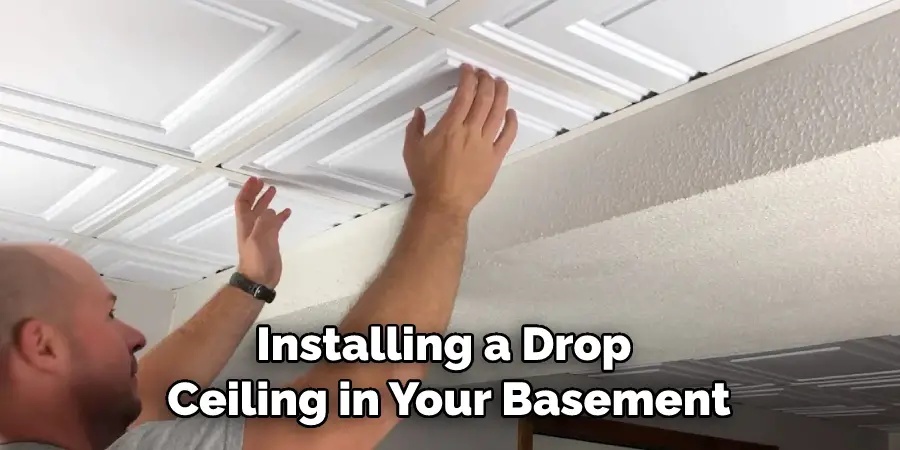
If a drop ceiling is installed correctly, you should also notice increased energy efficiency due to improved airflow from under the raised paneling. This not only creates higher soundproofing capabilities but also helps keep your home more comfortable as well.
By following these simple steps, you can easily and affordably soundproof your basement ceiling. With a few supplies and some patience, you’ll soon be able to enjoy a quieter and more peaceful space. So don’t wait any longer to start your soundproofing project – get started now! Good luck!
Tips to Soundproof Your Basement Ceiling
- The first step to soundproofing your basement ceiling is to understand what soundproofing is and how it works. Soundproofing is the process of absorbing or deflecting sound waves to reduce the amount of noise that enters a space. There are a variety of ways to soundproof a space, and the best method for you will depend on your specific needs and budget.
- Once you have a general understanding of soundproofing, you will need to identify the sources of noise in your basement. These could include things like footsteps from upstairs, noisy appliances, or even outside traffic noise. Once you have identified the sources of noise, you can begin to look into ways to reduce or eliminate them.
- Soundproofing your basement ceiling can be a costly endeavor, so it is important to consider your budget before beginning any work. There are a variety of methods for soundproofing a space, and some will be more expensive than others. You will need to decide how much you are willing to spend on materials and labor before beginning any work.
- There are a variety of materials that can be used for soundproofing, and it is important to choose the right materials for your needs. Some common soundproofing materials include acoustic foam, fiberglass insulation, mass-loaded vinyl, and acoustic sealant. You will need to decide which material is right for your space and budget before beginning any work.
- Once you have chosen the right materials for your needs, you will need to install them in your basement ceiling. This could involve attaching acoustic foam panels to the underside of your floor joists or installing fiberglass insulation between the studs in your walls. The specific installation method will vary depending on the materials you have chosen and the layout of your basement.
- In addition to absorbing sound, you may also want to install materials that will deflect sound waves away from your basement ceiling. This could involve hanging curtains or installing acoustical tiles on the ceiling itself. The specific installation method will vary depending on the materials you have chosen and the layout of your basement.
- Adding mass to your ceiling is another effective way to soundproof your basement. This could involve adding another layer of drywall or installing acoustic tiles on top of the existing drywall. The additional mass will help to absorb and deflect sound waves away from your living space.
- One final step in soundproofing your basement ceiling is to seal any gaps or cracks that may be present. This could involve caulking around windows or doors, sealing electrical outlets, or filling cracks in drywall with acoustical sealant. Sealing these gaps and cracks will help to prevent noise from entering your basement from outside sources.
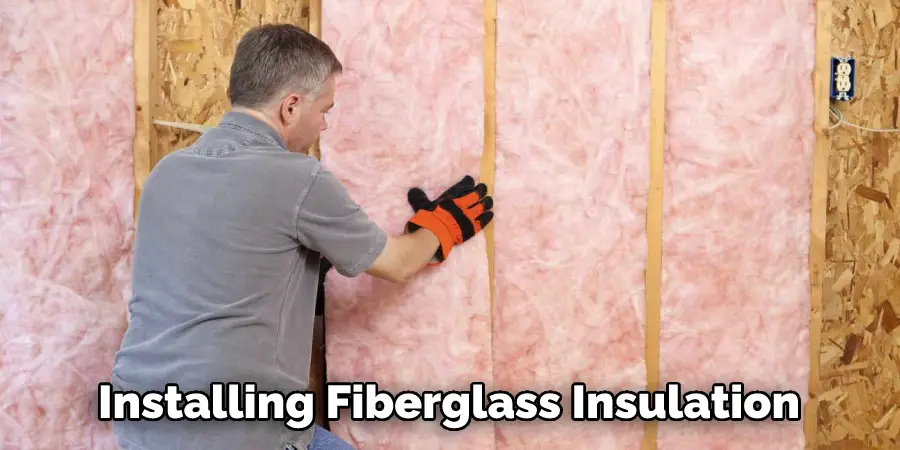
How Mass Load Vinyl Can Help You Achieve Maximum Noise Reduction in Your Basement?
Mass-loaded vinyl can be an incredibly effective way to achieve maximum noise reduction in your basement. By strategically placing it on the wall, ceiling, and/or floorboards, sound waves are effectively blocked from transferring through walls, resulting in greatly diminished noise levels and improved soundproofing.
The vinyl material is incredibly dense and heavy, so it’s also highly efficient at blocking sound. Additionally, mass-load vinyl is easy to install without the need for any special tools or tradespeople, making it a great DIY solution! It also stands up well against water damage and other elements like mold and mildew since the backing is designed with a moisture barrier.
So if you’re looking for a cost-effective and simple way to reduce noise levels in your basement, Mass load vinyl could be just the solution you need.
How Acoustic Foam Panels Will Make your Basement Feel Like an Oasis?
Working from home has never been easier with acoustic foam panels. These noise-absorbing tiles help suppress reverberating sound in large open spaces like the basement, making it the perfect work or relaxation corner. This will especially make a difference if you are hosting regular virtual meetings as the acoustics are essential for clear audio capture and transmission in video chat.
Not only will you be able to focus on your tasks more easily, but you’ll also be able to enjoy enhanced sound clarity for streaming your favorite movies or binging on the latest binge-worthy shows! Create a private oasis by investing in acoustic foam panels and finally enjoy the momentary escape right at home.
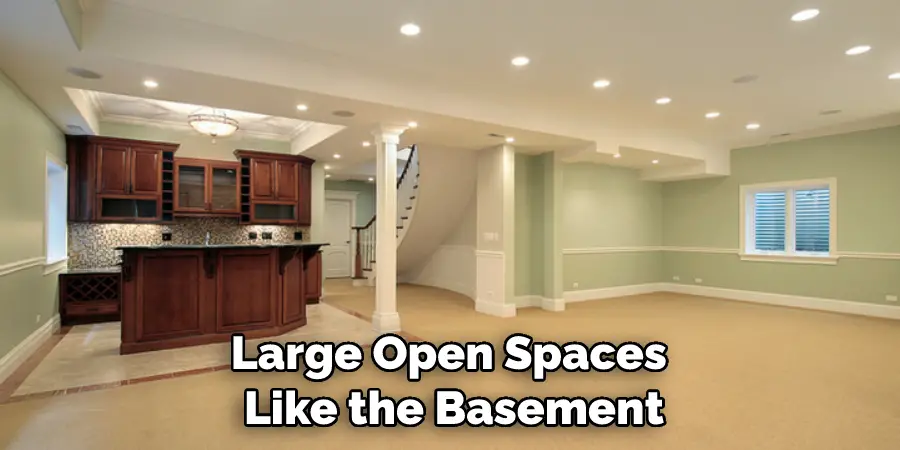
Conclusion
If you have a basement that you want to soundproof, there are a few things you can do to create a barrier between the noise and your home. You should carefully determine How to Soundproof Your Basement Ceiling.
By following these tips, you can reduce the number of noisy footsteps or TV sounds that travel upstairs. In addition, having a soundproofed basement can also improve the resale value of your home. So if you’re looking for ways to make your house more peaceful, start with soundproofing your basement ceiling.

